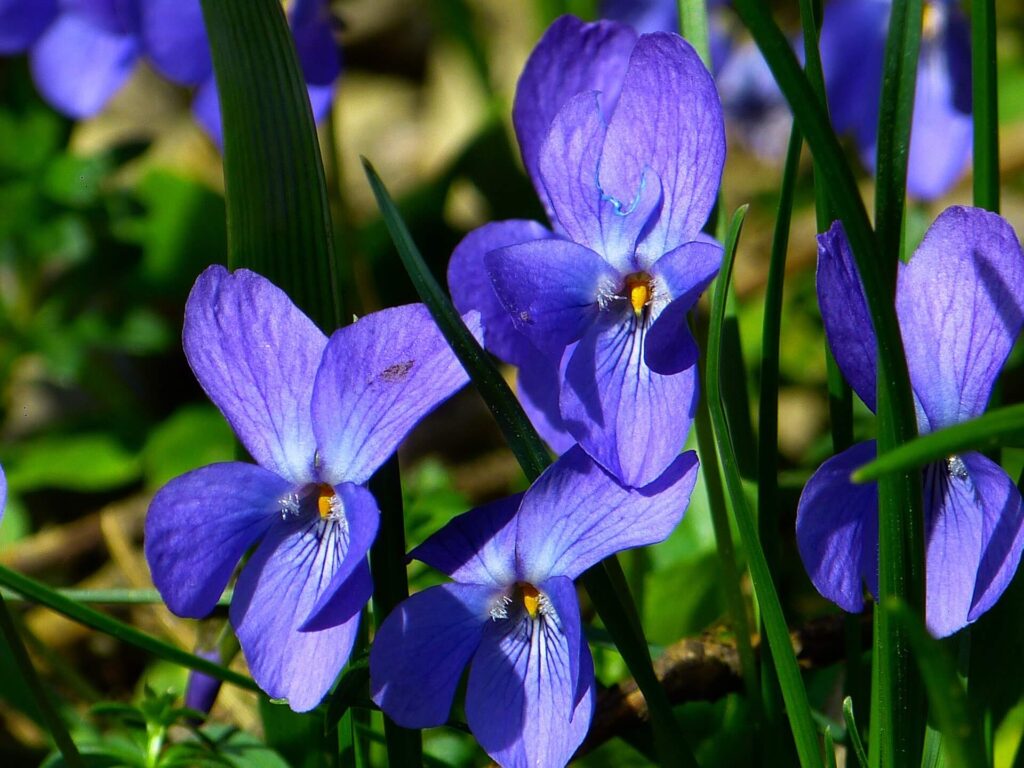Viola: Adding Color and Charm to Your Garden
Viola, commonly known as violets, are charming garden flowers known for their vibrant colors and delicate blooms. Here’s a comprehensive guide on growing and caring for Viola.

Types of Viola
Viola comes in various types, each with unique characteristics. Here are some common types:
| Type of Viola | Characteristics |
|---|---|
| Wild Violets | Small, heart-shaped leaves, typically purple or blue flowers. Blooms in spring. |
| Pansies | Large, flat-faced flowers, wide range of colors, blooms from spring to fall. |
| Johnny Jump-Ups | Smaller than pansies, tri-colored flowers, blooms in early spring and fall. |
| Sweet Violets | Highly fragrant, purple or white flowers, blooms in early spring. |
Growing Season
Viola typically blooms from early spring to late fall, depending on the variety and climate.
| Season | Activity |
|---|---|
| Spring | Plant new Viola, fertilize, start regular watering. |
| Summer | Continue watering, deadhead spent blooms to encourage more flowers. |
| Fall | Plant new Viola, prune, prepare for winter. |
| Winter | Minimal maintenance, protect from severe frost if necessary. |
Sunlight and Water Needs
Viola thrives in full sun to partial shade, requiring at least 4-6 hours of direct sunlight daily. They need regular watering, especially during dry periods, but ensure the soil drains well to prevent root rot.
Soil Preferences
Viola prefers well-drained, moderately fertile soil with a slightly acidic to neutral pH.
| Soil Type | pH Level | Characteristics |
|---|---|---|
| Loamy Soil | 6.0-7.0 | Rich in nutrients, retains moisture well. |
| Sandy Soil | 6.0-7.0 | Drains quickly, ideal for preventing root rot. |
| Clay Soil | 6.0-7.0 | Needs good drainage, can be amended with organic matter. |
Fertilization and Nutrients
Viola benefits from light feeding. Use a balanced fertilizer in the spring and mid-summer to promote healthy blooms.
| Season | Fertilization Type |
|---|---|
| Spring | Balanced NPK fertilizer (10-10-10) at planting time. |
| Summer | Balanced NPK fertilizer if growth slows down. |
| Fall | Light fertilization if planting new Viola. |
Pruning and Maintenance
Regular maintenance helps keep Viola healthy and blooming. Deadhead spent flowers to encourage more blooms and trim back leggy growth.
Additional Tips for Growing Viola
- Mulching: Apply a layer of mulch around the base of your Viola to retain moisture and suppress weeds.
- Pest Control: Watch out for common pests like aphids and slugs. Use organic treatments as necessary.
- Winter Protection: In colder climates, protect Viola from frost by covering them with mulch or moving potted plants indoors.
Conclusion
Viola is a delightful addition to any garden, offering vibrant, cheerful blooms with minimal care. From selecting the right type of Viola to ensuring proper sunlight, water, and soil conditions, you can enjoy these colorful flowers for an extended blooming season.